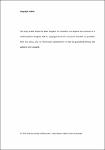An Analysis of a Public Health Media Campaign in Switzerland
| dc.contributor.supervisor | Mishra, Atul | |
| dc.contributor.author | Faulk-Antonakis, Eleanor Saskia | |
| dc.contributor.other | Plymouth Business School | en_US |
| dc.date.accessioned | 2023-10-27T09:05:13Z | |
| dc.date.available | 2023-10-27T09:05:13Z | |
| dc.date.issued | 2023 | |
| dc.identifier | 10543161 | en_US |
| dc.identifier.uri | https://pearl.plymouth.ac.uk/handle/10026.1/21489 | |
| dc.description.abstract |
This multidisciplinary, grounded theory study analyses public health media communication for Human Immunodeficiency Virus (HIV) and Sexually Transmitted Infections (STI) prevention in Switzerland. Health communication researchers measure the effects of media campaigns on populations to improve prevention. However, such effects may evade measurement due to complex interactions between audiences, media channels and ecology, message content, and targeting strategies. Competing theories explain media effects on health behaviours but there is a dearth of research examining upstream planning and stakeholder perceptions of media campaigns. In effect, interactions between communities, health officials, practitioners, and communication/media stakeholders are politically sensitive, and inaccessible to researchers. Whereas national HIV and STI prevalence was relatively low, the Swiss government aimed to raise general public awareness about risks and prevention. LOVE LIFE 2019 was a multimedia public health campaign centred on a video series promoting male condom use as well as a Safer Sex Check questionnaire providing tailored recommendations. This case study utilises innovative triangulation of media analysis methods including content analysis; digital ecosystem analysis; Goffmann’s theatrical frame and gender display; grammar of visual design and social semiotics; intervention theoretical indicators; and social marketing and extended social marketing, to retroactively understand encoded values and underlying mechanics of the media strategy. Concurrently, international and national authorities and practitioners with diverse stakeholder viewpoints were interviewed regarding media campaign planning in general and LOVE LIFE 2019 specifically. As a complement to grounded theory, thematic analysis elucidated interview and media themes, leading to insights into stakeholder environments and media effects. Grounded theory methodology resulted in a substantive theory comprising four testable propositions to guide further research, identifying relationships between culture, ideology, and values, with implications for public health media communication. Based on the substantive theory, practical recommendations were formulated to address contextual issues: (a) a content strategy for HIV and STI prevention targeting the general public; (b) HIV and STI federal policies; (c) inclusive design processes for human-centered planning; and (d) ethical considerations for public health utilisation of digital media. | en_US |
| dc.language.iso | en | |
| dc.publisher | University of Plymouth | |
| dc.rights | Attribution-NonCommercial-NoDerivs 3.0 United States | * |
| dc.rights.uri | http://creativecommons.org/licenses/by-nc-nd/3.0/us/ | * |
| dc.subject | health communication, social media, video, content strategy, HIV prevention, STI, condom, campaign planning | en_US |
| dc.subject.classification | Other (e.g., MD, EdD, DBA, DClinPsy) | en_US |
| dc.title | An Analysis of a Public Health Media Campaign in Switzerland | en_US |
| dc.type | Thesis | |
| plymouth.version | publishable | en_US |
| dc.identifier.doi | http://dx.doi.org/10.24382/5102 | |
| dc.identifier.doi | http://dx.doi.org/10.24382/5102 | |
| dc.rights.embargoperiod | No embargo | en_US |
| dc.type.qualification | Doctorate | en_US |
| rioxxterms.version | NA |
Files in this item
This item appears in the following Collection(s)
-
01 Research Theses Main Collection
Research Theses Main



